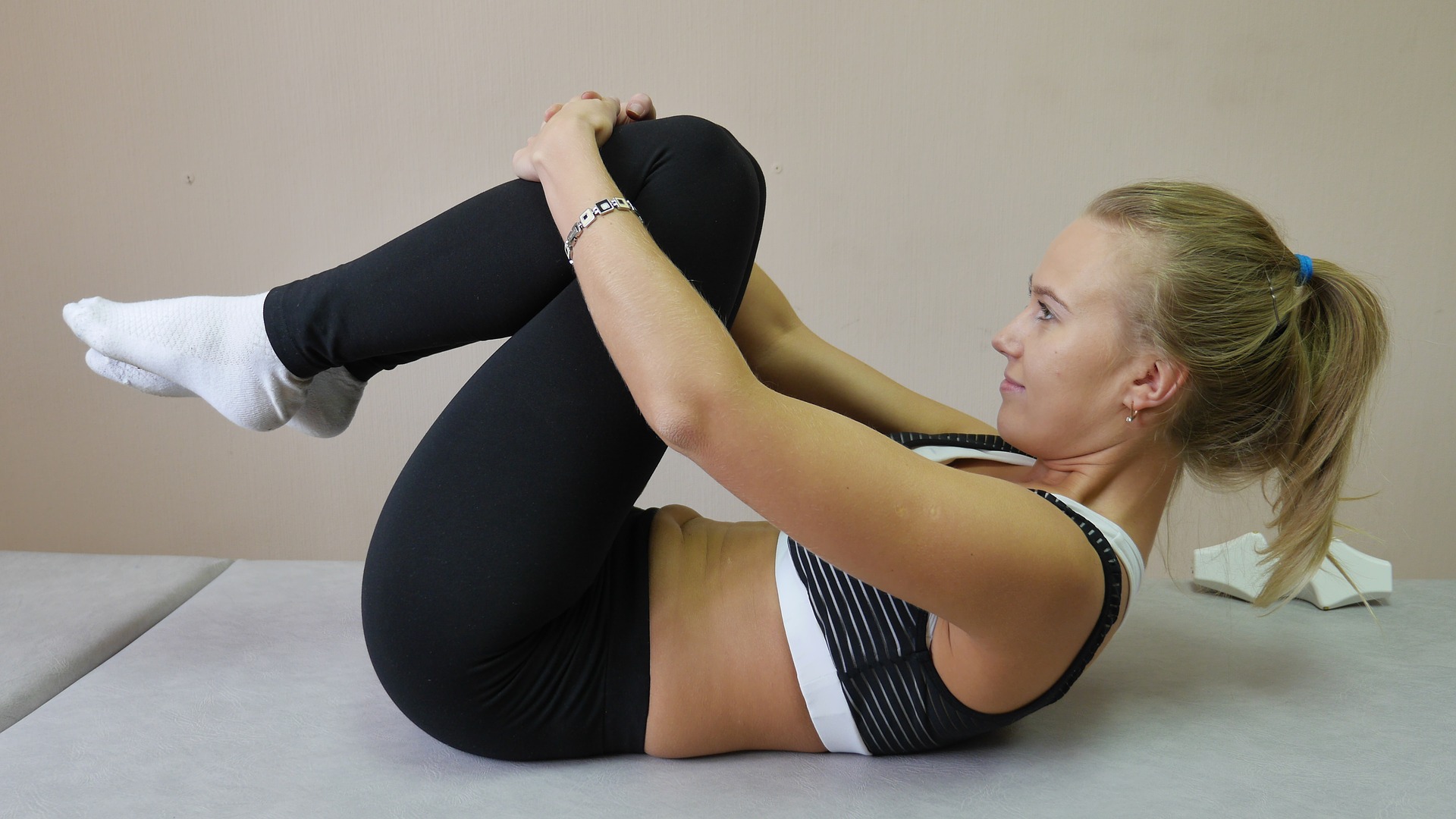
-Does you neck and upper back seem to be a constant annoyance?
-Do you have tight and sore spots that never seem to go away?
-Does your range of motion seem limited?
-Does your neck sometimes go into spasm and “lock down”?
-Are you worried that you’re going to have to have surgery?
-Have you tried multiple chiropractors, massage therapy, Active Release Technique, different pillows, pain meds, etc?
“I’ve been there. But I’ve also overcome it.”
My neck is no longer a source of pain and tightness and no longer a source of fear and doubt.
I’m not going to tell you that getting your neck adjusted is going to cure you or that you need a year’s worth of treatment of 3 visits to the chiropractor per week. (If that has happened to you, then I’m sorry, but you got scammed.) It’s not about finding the right technique (e.g., Gonstead, Activator, Upper Cervical specific, etc.) or getting an adjustment to “hold”. None of that worked for me, and as you can imagine, I’ve been adjusted by many practitioners with many different techniques.
How it Began
My neck/upper back pain first started when I was 17. I was a self-adjuster since I was probably 12 years old. What that means, is that several times a day, I would wrench my neck forcefully to the left and to the right and make it pop. It’s not that my neck was painful, but it just felt better after I cracked it.
“Feeling like you constantly want to pop your neck or feeling like it constantly needs adjusted is not a good sign. It might not be bothersome enough to do anything about fixing it, but it’s very likely a sign that there is dysfunction.”
The first time I had significant neck pain was during/after my final wrestling match of my junior year in high school, some kind of sprain/strain injury that locked my neck down and reduced my rotation to nearly 0 degrees for about a week.
This started a cycle of reinjury that was recurring for about 11 years (up until about eighteen months ago) and probably happened 20-30 times during that period.
I’m not talking about the kind of neck pain that happens after a long day in a chair that goes away the next day or a stiff neck after sleeping wrong that goes away in a couple of days. I’m talking about neck pain that locks your neck down to only a few degrees of range of motion, so when you turn to talk to the person next to you, you have to rotate from the waist and look at them with your peripheral vision – and it lasts for a couple of weeks and may even linger beyond that.
Even when my neck wasn’t in an acute state of lock down, I had chronic tender/stiff/sore spots that would move around somewhat, depending on the most recent injury. They would reside in my upper neck, lower neck, and various shoulder blade areas (from about T6 on up).
HOW DID THESE INJURIES OCCUR?
For me, wrestling and jiu jitsu were the main culprit. These grappling sports can put a tremendous amount of strain and pressure on the structures of the neck. The other main culprit was overhead pressing. It happened a couple times from other things, but those were the main culprits.
I stopped doing jiu jitsu about 3 years ago after moving and not being as interested to devote the time. I started doing Crossfit shortly after that and found myself straining my neck on a regular basis – particularly from overhead pressing, Olympic lifts such as the snatch and the jerk, and from handstand pushups. It’s a very frustrating thing to feel like you have a weak link, and you’re never quite sure when you’re going to set it into pain.
TRYING TO MAKE SENSE OF MY PAIN AND INJURY
My most pervasive thought over the years was that I had destabilized my cervical spine by all the self-adjusting that I had done over the years.
Several years ago I had come to terms that my neck was just going to be one of my “weak links” that was going to plague me for life. I had gotten pretty used to injuring it and was no longer alarmed at the pain level and restriction when it would happen. I had gotten pretty good at stopping when I felt a little “tweak” which helped to make recovery time closer to 1 week compared to two.
I have seen x-rays of my neck, and I have the scary straightened cervical curvature that you may have seen on the posters of spinal degeneration. I was fearful of what would happen to my neck in the future. Most of us know people who have had to have cervical spinal segments fused or just have ridiculously stiff necks that lack a lot of range of motion. I doubt many of them have injured their neck as many times as I have – so naturally, I thought that cervical spinal surgery may be inevitable for my future. That’s a scary thought.
THINGS I’VE TRIED THAT DIDN’T WORK
I’ve been adjusted professionally (ie, by a chiropractor) many times throughout my life by many different chiropractors. I never felt like it did very much for this problem, and I never got the sense that it reduced my chance of re-injury. I assumed it was helpful, but that’s mostly because it seemed like there wasn’t really another better option.
I’ve had massage on the various sore and “affected” muscles. Massage always feels great but never seemed to really do much to positively impact the issue or reduce recurrence.
I’ve used some of the electric modalities like muscle-stim and ultrasound with no considerable positive results.
These are all good pain relief options, and I am in no way saying they aren’t beneficial in lessening pain and likely reducing its duration.
I tried foam rolling and self-massage, and of course, more self-adjusting.
But none of these things really got me totally pain-free and gave me a sense of confidence and understanding about my neck and how to avoid reinjury.
SOMETHING THAT KIND OF WORKED
Let me first say that I thought that I would have a strong neck, you know, from all the wrestling and jiu-jitsu, so I didn’t really think that strengthening my neck was an issue that would be particularly beneficial.
One of the ways that I was able to reduce the chance of injury was to essentially “warm up” the muscles, not with heat but by doing various neck bridges and using my hands to resist various neck movements, kind of like how people lift some lighter weights before they lift heavier ones or do some light running before sprinting. So naturally, it makes quite a bit of sense to warm up the neck muscles before they have some high-level tension put on them by your grappling opponent.
The problem was that this was only moderately helpful and got really annoying to have to do every time before going to the gym to lift weights or wrestle. But at least I had something that was somewhat helpful.
But like I said, even when I didn’t have an acute injury, I always had some degree of pain and stiffness that indicated to me that things weren’t right and created fear for what is to come for my spine. – You only get one, and so far, I’ve never heard of a spinal transplant.
WHAT REALLY WORKED FOR MY NECK
It wasn’t until I understood the motor control component of the cervical spine that I was able to make significant positive progress with my neck.
What this means is:
– understanding the positions that the cervical spine is well suited for and positions it’s not and
– when and how to activate the stabilizing muscles of the cervical spine.
From there, we usually (although not always) need to add some strength to the anterior muscles of the neck. It’s one of those very simple yet potentially complicated situations. By that, I mean that although my studies through textbooks and journals revealed this issue and gave examples for correction, I never found the examples to be very suited for real-world situations or very effective. While it took me a long time to figure this out – it has now become simple (I guess I had to get my 10,000 hours in).
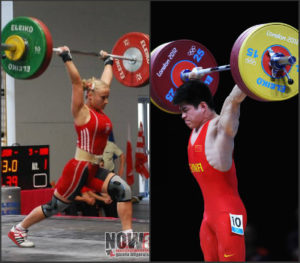
Notice the head and chin position of these two lifters and notice that their gaze line is pointed downward. It’s hard to tell, but you can notice with the Chinese lifter that you don’t see a prominent sternocleidomastoid muscle in his neck. These pictures provide big-time clues to solving the dilemma of chronic neck pain.
Compare the above images to what we often see when a person puts a bar over their head
We often get something that looks similar to this…
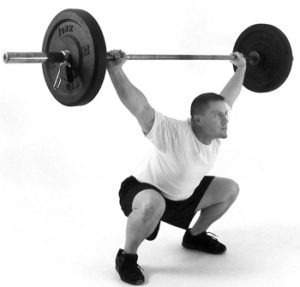
Adding load to this already unstable cervical position will create a faster path to neck pain but being in this neck position for a long time, even without load, will usually lead to neck and upper back pain.
Notice that if this person’s torso was fully vertical, they would be looking upwards fairly significantly. Also, notice the protrusive looking chin position. This is very similar to the position many people spend hours every day in at their desk or while driving, or any number of activities.
Here’s one more of a stable neck position and to contrast with the picture above.
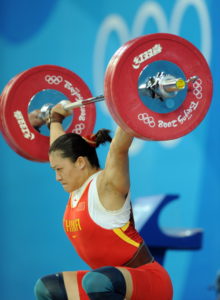
What does weightlifting have to do with “normal” non-weightlifting neck pain and function?
Adding load exposes the fault.
With poor posture, the effects are usually not very immediate. It often starts as a slowly progressing mild ache that progresses into worse pain over time. Many things in life have this insidiousness that makes it really hard to understand the importance of the results of small things done over time.
Adding load exposes the fault much more quickly and brings a tangible manifestation to the problem.
For example, if I put a person with neck pain in an unstable neck position with a bar overhead – it doesn’t feel very good. If we correct the position, the neck pain usually goes away.
The Thoracic Spine – One of the Keys to the Neck
Understanding the importance of a mobile thoracic spine and then working on this area has been one of the keys to helping my neck function better. I think that spinal manipulation works well for this, but it’s not the only way, and there are some really good self-treatment options that can be pretty beneficial.
I personally find cervical and thoracic spinal manipulation to be beneficial for keeping my neck feeling good but it’s much lower in priority (generally) than the other things mentioned.
The forward, rounded upper back makes it much more difficult to create a stable cervical spine and will the usually make the forward head posture worse.
Solving this problem is one of
Mobility
Are the right parts moving as needed?
Stability
Do we have the necessary strength in the right places?
Motor Control
Do we understand and can we get in the right positions and use proper muscle sequencing? (it’s not as hard as it sounds)
And getting a grasp on the neurobiology of pain. Pain is much more complex than just tissues, anatomy, and biomechanics.
Ultimately, neck and upper back pain can be solved rather simply in the vast majority of cases (even when it’s severe and chronic). The solution requires active participation on your part and requires a dynamic or movement-based approach.
While I am confident that other approaches can be successful, we have to question their necessity and utility and we also have to define success.
I have heard plenty of anecdotal cases of success with various treatment approaches, but at what cost, how long did it take and to what degree does the treatment hold up.
For example, my treatment protocol can range from simple pain relief to being able to use your neck in the most demanding situations, such as grappling sports and overhead pressing movements.
Some of the things that I’ve seen around the chiropractic landscape involve things that to me, seem unnecessarily complicated, expensive, and miss the point as well as apply the wrong principle.
Lastly…
Do you need an x-ray or an MRI of your neck?
In the majority of cases…NO.
Not only can imaging be costly, but there are those who will use that image to scare you into thinking you need an expensive and lengthy treatment plan.
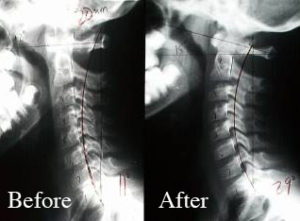
The curve changed!!! Wait, am I fixed? What does this mean?
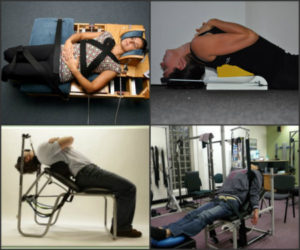
If it’s uncomfortable then it must be working…
Is changing your cervical curvature going to change how you use your neck?
Mostly no.
But, if we improve or restore FUNCTION with a biopsychosocial approach and use the principles of movement, we will create a pain-free, stable cervical spine and will likely inadvertently positively affect the spinal curvature as well.

